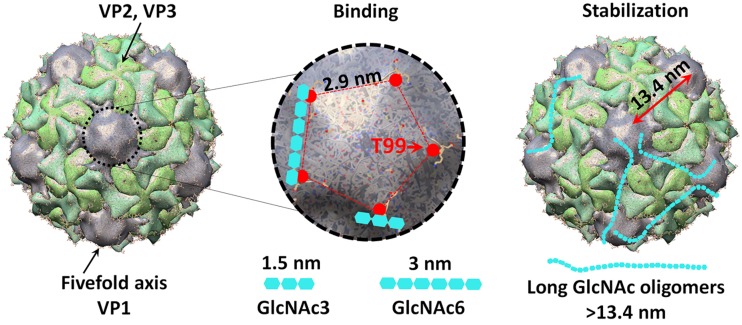FIG 6.
Model of glycan binding and stabilization of poliovirus. The poliovirus capsid contains 60 copies each of VP1, VP2, VP3, and VP4. VP4 is internal and not surface exposed. VP1 surrounds the 5-fold symmetry axis, whereas VP2 and VP3 alternate around the 3-fold axis. Based on the number of capsid proteins present, each virion may have 60 glycan binding sites. The exposed T99 residue of VP1 is important for polysaccharide binding and is likely near the glycan binding site. The distance between two nearby T99 residues is 2.9 nm, corresponding with the length of GlcNAc6 (3 nm). It is possible that GlcNAc6 can bind two adjacent glycan binding sites within a 5-fold axis, resulting in increased avidity compared with that of monovalent nonbinding GlcNAc3 (1.5 nm). Long-chain polysaccharides (>13.4 nm) are long enough to potentially bridge nearby 5-fold axes, form cage-like structures on the virion surface, and stabilize poliovirus against heat-induced conformational change causing premature RNA release.

